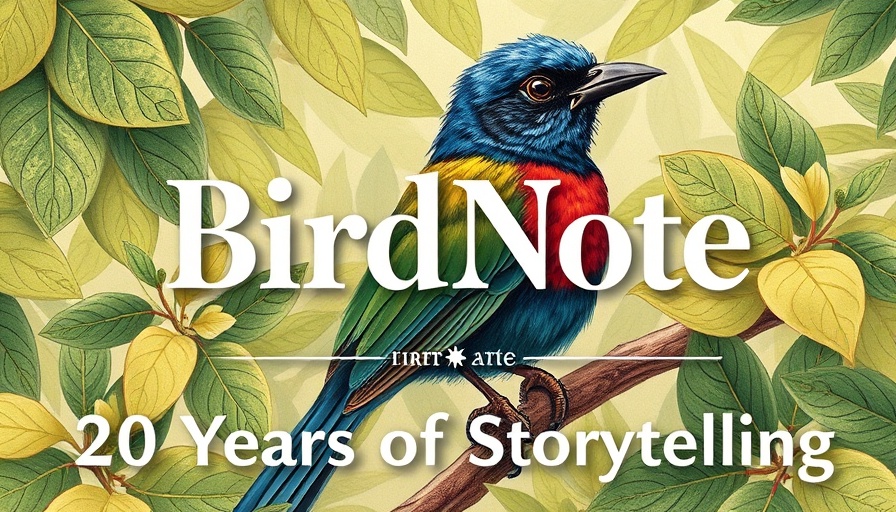
BirdNote's 20-Year Legacy of Avian Awareness
In a world increasingly detached from nature, BirdNote has become a unique and cherished voice for bird enthusiasts and the general public alike. As it celebrates its 20th anniversary, BirdNote reflects on the profound impact it has made through short, poignant narratives about the lives of birds, broadcasted daily to millions on public radio stations across the United States. Originating in Tacoma, Washington, BirdNote debuted its first episode on February 21, 2005, and has since captivated audiences with over 7,000 unique segments that inspire action for environmental conservation.
Connecting Listeners to the Natural World
The power of storytelling is at the core of BirdNote’s appeal. Each segment, often rich with background bird calls, serves not just as an informative piece but as a means to create a deeper appreciation for biodiversity. Executive Director Nick Bayard emphasizes that the show's growth—now airing on over 330 stations—demonstrates the importance of keeping people entertained while simultaneously educating them about the birds they hear and see in their backyards. “Birds are everywhere,” Bayard says, reiterating that their stories can inspire viewers to become more engaged in outdoor activities.
Fostering a Culture of Inclusivity and Conservation
In recent years, BirdNote has expanded its outreach to diverse communities, celebrating events such as Black Birders Week, which showcases the contributions of Black ornithologists and advocates for representation in nature. This commitment to inclusivity helps bridge gaps, drawing in younger audiences ready to explore birding in a contemporary context. Through these actions, BirdNote aims to not just inform, but actively involve its listeners in conservation efforts as part of its mission.
Looking to a Future of Engagement and Growth
As BirdNote embarks on another 20 years of storytelling, it is committed to fostering a new generation of birders, particularly among Gen Z. The organization has begun initiatives aimed specifically at this demographic, incorporating the latest social media trends and environmental advocacy. Bayard believes that by instilling a passion for birds in younger generations, BirdNote can ensure a more sustainable future for both birds and the habitats they inhabit.
Your Part in the Celebration
BirdNote's journey is a testament to the power of shared stories and a collective love for avian life. Listeners are invited not only to reflect on their favorite episodes but also to actively participate by sharing their own birding experiences and purchases from the BirdNote shop, which features 20th-anniversary merchandise. With a supportive community behind it, BirdNote stands poised to continue its mission: "Now and forever, this is BirdNote."
 Add Row
Add Row  Add
Add 




Write A Comment